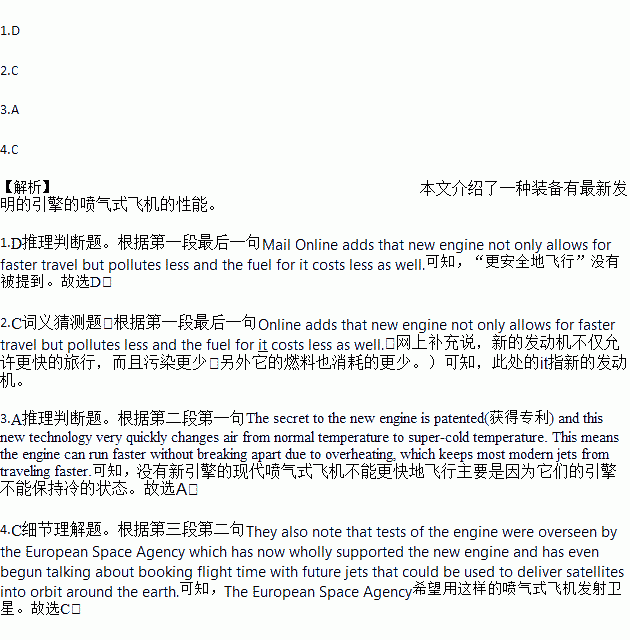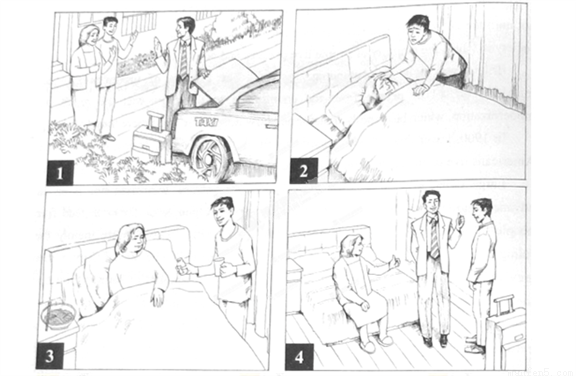题目内容
British engineers at a company called Reaction Engines, have successfully tested a whole new kind of jet engine, named Sabre, Financial Times is reporting, so that the time of long-distance flight could be halved, or even quartered. Britain’s Orange News says jets with the new engine could fly from London to Sydney in four hours, instead of the usual twelve to sixteen hours and Mail Online adds that new engine not only allows for faster travel but pollutes less and the fuel for it costs less as well.
The secret to the new engine is patented(获得专利) and this new technology very quickly changes air from normal temperature to super-cold temperature. This means the engine can run faster without breaking apart due to overheating, which keeps most modern jets from traveling faster. The engine is air-breathing and use hydrogen as its fuel source. In addition to flying faster, a jet with the new engine would also fly much higher, allowing for an even faster flight in the very thin air. Because of the very high speed produced by the engine and the high altitude, a jet with Sabre in it would not have any windows.
This is the biggest breakthrough in jet technology since the invention of the jet engine, and they expect new aircraft with the new engine to be traveling in the sky in just ten years. They also note that tests of the engine were overseen by the European Space Agency which has now wholly supported the new engine and has even begun talking about booking flight time with future jets that could be used to deliver satellites into orbit around the earth.
This technology is not something that happens overnight. Instead, it is the result of many years’ hard work by thousands of engineers from over seventeen countries. Research has suggested that, with advances in jet plane technology to match the engine, flights could eventually reach speeds of nearly 20,000 miles per hour, making travel to distant parts of the globe as quick and simple as driving across town.
1.Which advantage of jets with the new engine is NOT mentioned?
A. traveling faster B. polluting less
C. costing less D. flying more safely
2.What does the underlined word “it” in Paragraph 1 refer to ?
A. Reaction Engines. B. A long-distance flight.
C. A jet with the new engine. D. Mail Online.
3.The modern jets without the new engine can’t travel faster mainly because ________.
A. their engines can’t stay cool
B. they use a normal fuel source
C. they just fly at very high altitudes
D. their engines can’t allow jets to fly in the thin air
4.The European Space Agency hoped to ________.
A. be in charge of testing the technology
B. play the leading role in jet technology
C. use jets with the new engine to launch satellites
D. buy all the products made by Reaction Engines
 天天向上一本好卷系列答案
天天向上一本好卷系列答案 小学生10分钟应用题系列答案
小学生10分钟应用题系列答案

 y which nationality is listed on your passport.
y which nationality is listed on your passport.